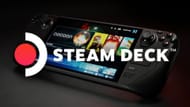SteamOS and Windows are currently the major operating systems being used across a wide range of handheld consoles. While both offer a robust architecture for handheld players to run their games and complete an array of tasks, they possess unique features and perks that might make one better than the other.
So, which is the best operating system for a handheld console? Read on to find out.
SteamOS vs Windows: Which is the best operating system for your handheld console?
The SteamOS vs Windows debate has been going on for a while, with many players rallying in support of the sleep OS developed by Valve, while the purists prefer to stick to their roots and embrace Microsoft's legacy. Both operating systems are optimized for use in consoles, but some perks and features might just make one better than the other.
1) System optimization

SteamOS is primarily made for handheld devices and features a relatively cleaner and bloatware-free system that gives it a lighter deployment in comparison to Windows. With the same hardware, games tend to perform in SteamOS devices due to significantly fewer background processes. This is great for players who wish to squeeze every ounce of performance from their device.
This also has a direct impact on the thermals when comparing SteamOS and Windows. Since Windows devices have an array of ongoing background processes, the core utilization is higher, leading to increased thermals as compared to Valve's OS, where the temperatures are comparatively lower.
2) TDP and framerate control

Apart from this, SteamOS offers players native support to adjust and modify the TDP and framerates on the fly. Unlike Windows, where players need to install third-party applications, Valve's system offers a native solution that also has the option to set up per-app profiles where they choose certain values for specific games and then change them automatically when launching a different game.
The above factors of system utilization, TDP, and thermals also directly affect the battery performance and utilization, which determines how long a player can mash buttons and play their favorite game before they have to rush to the nearest charging port.
The better optimization on the SteamOS seamlessly offers players more gameplay time compared to handheld devices running Windows. The ability to lower framerates and adjust TDP offers players more control over maintaining their battery levels and ensuring extended gameplay times.
3) User Interface

Moving over to the user interface, it is perhaps one of the most important aspects since it determines the user's interaction with the handheld and is critical in offering a seamless gameplay experience. SteamOS natively launches the list of games, allowing players to dive into their favorite title with ease.
On the other hand, Windows handhelds will require players to boot the device, open a game launcher like Steam, and then select their preferred title to run it. Additionally, the Big Picture Mode on SteamOS is better optimized for handhelds than Windows is, offering a more intuitive way to handle the device.
4) Pricing

It is also worth noting that Windows is a paid operating system, and manufacturers of consoles will add the cost of OS licensing to the final retail price. This makes the final prices of the handheld console go up, making them less affordable for players.
In comparison, devices like the Steam Deck will offer near-similar performance at comparatively lower prices since it is a free and open-source operating system developed by Valve.
The verdict

In a comparison between SteamOS and Windows, Valve's operating system comes out as the clear winner. SteamOS is a robust OS that is natively developed for handheld devices and consoles, ensuring the user interface and performance are specifically targeted for those devices — unlike Windows, which can run on just about anything with a screen, including refrigerators and air purifiers.
Additionally, the lighter deployment and fewer background processes will allow players to squeeze out the maximum performance instead of being bogged down by one of the million tiny background processes that Windows is plagued with. You can spend the time you save by not opening the Task Manager and killing processes to do better things, like gaming.
The freedom offered by SteamOS to set custom TDP and framerate curves is also a great aspect for handheld devices, since some games may not be optimized perfectly and will need manual adjustments. The native support, paired with better resource optimization, clearly makes Valve's operating system the superior choice for gamers.
Also read: SteamOS 3.7.0 Preview released: Can it replace Windows for gamers?
Read more handheld console-related topics below:
- Steam Deck vs ROG Ally: Which handheld should you pick?
- Best handheld gaming PCs, ranked
- Can you play Rise of the Ronin well on Steam Deck and Asus ROG Ally?
- Is Metaphor ReFantazio available on the Steam Deck?
- Lenovo Legion Go S specs, prices, launch window, and more
